Building Energy Models (BEM) are a set of formulae that allow to model the energy performance of buildings. When developing BEMs through complex software such as EnergyPlus, there are hundreds/thousands of formulae inside the BEM. Each of these making a small contribution to model the overall physics of the system. When we develop Reduced Order Models (ROMs), we typically use only a few formulae representing the key physics.
Although we do not typically say that a ROM is a full BEM, there is some sort of correspondence as they both model the same output variables (i.e. indoor temperature).
Both BEMs and ROMs are also called Digital Twins (DTs, everything is a DT these days), and there are many AI-based models/DTs out there. But nobody really knows what’s behind DT and AI. The only certain thing is that most AI models are several orders of magnitude larger than BEMs.
A relevant thing of DTs is that they are meant to interact with real-life data streams from weather stations to deliver real-life prediction, screening… applications.
The effect of meteorological conditions in buildings is complex. And there are particular issues when dealing with solar radiation. We know that solar radiation is absorbed in building surfaces or transmitted through windows with some efficiency (absorptance, transmittance, etc.). To date, most models have considered this impact with linear coefficients (i.e. g values).
Shall the sun remain still in the sky, this would be a nice approach. Actually, the sun is still and we are moving around it. There are also some other interactions with the environment that request to develop more complex models.
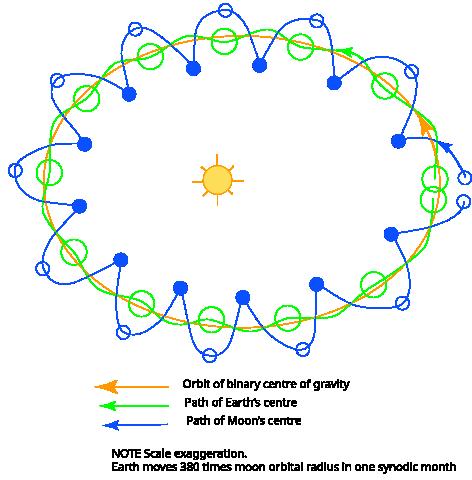
Earth orbit around the sun. Source: Wikipedia. CC.BY.3.0
Some qualitative aspects of solar radiation, how it is measured, how it impacts the building, and the variation of this with the position of the sun in the sky, etc. must be considered.
- Solar radiation comes from the sun. Until it gets into the atmosphere, all the radiation goes in the same direction. But then it is absorbed, reflected, re-emitted, etc. In the atmosphere, geographical obstacles, the ground, etc. In the end, the solar radiation impacting a building is a mixture of Direct (coming directly from the sun) and Diffuse radiation. Ground Reflected is also a different kind of radiation, but for the purpose of this blog post, I will integrate this into the Diffuse term.
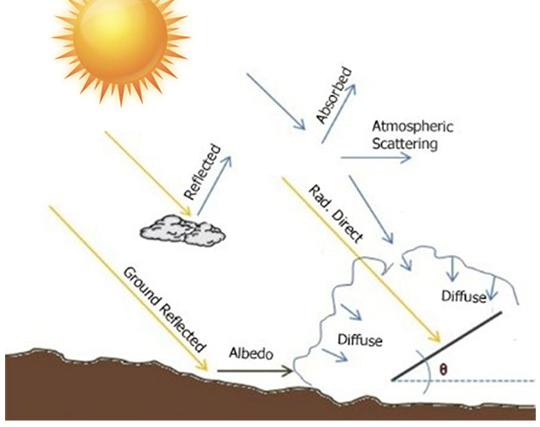
Path of the solar radiation into the atmosphere. Source: CSIC. CC.BY.4.0
- Standard weather stations measure solar irradiation over the horizontal plane. This corresponds to the global radiation (both Direct and diffuse radiation).
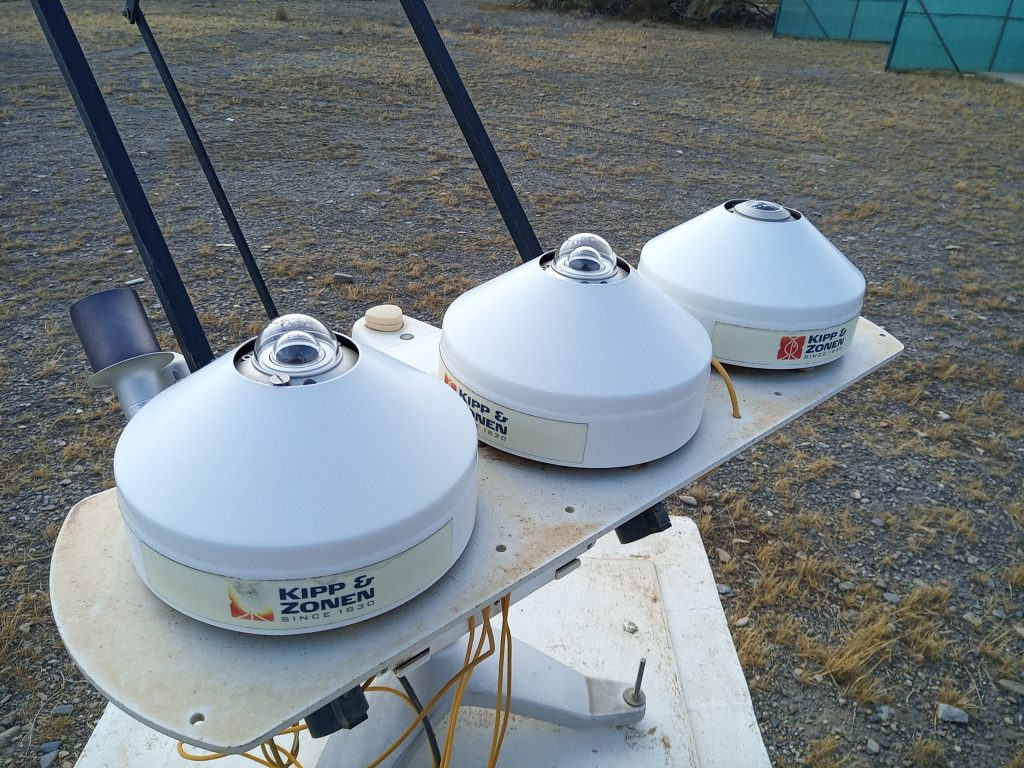
Set of pyranometers, pyrgeometer and, pyrheliometer in a sun tracker system in the Plataforma Solar de Almería. Source: CIEMAT
- Solar radiation hits building envelopes (walls, roofs…) and penetrates the building through glazed envelopes (windows…). For the former case, solar radiation impacts as a local overheating of the external surface of the envelopes that is partially transferred inside the building in the mid-term (hours). For the latter case, the impact of solar radiation into the internal environment is substantially higher and faster. All these effects are highly dependent on the geometry of the building. In my personal house, most of the solar heat gain corresponds to a few south-west facing windows leading to overheating in the early afternoon.
All the complexities stated above make it difficult to perform a linear match of the effect of solar radiation in buildings to the data available from standard weather stations. An extreme case of mismatch occurs in cases such as east-facing windows, where solar radiation impacts the building early in the morning, while solar radiation over the horizontal has its maximum at noon.
An example of this mismatch is presented in the picture below. The sun is high in the sky, resulting in a large value on global irradiation over the horizontal plane (magenta), while the incidence over a window (blue) is almost marginal.
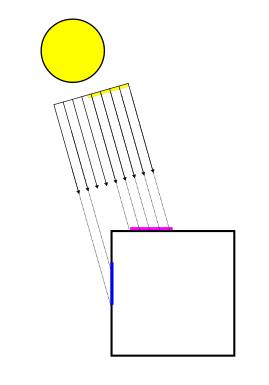
This gets even more complex with the variation of solar geometry over the year.
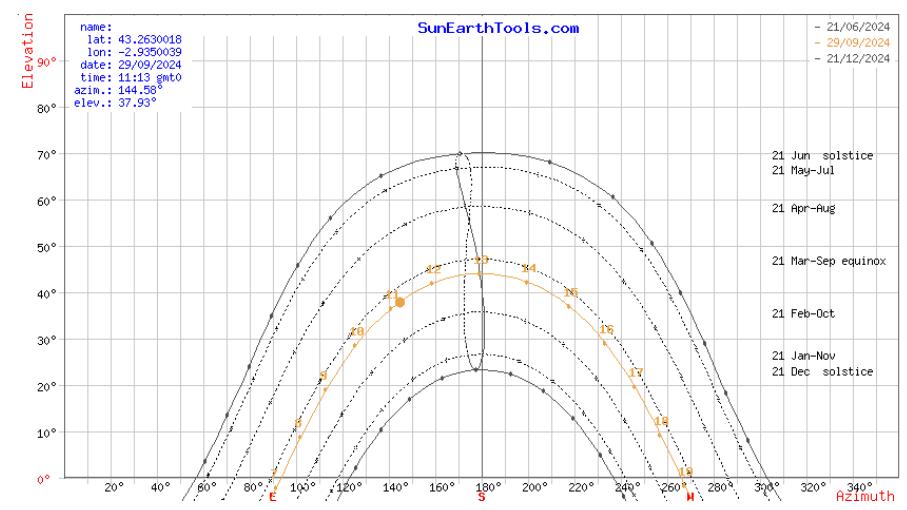
Solar chart for Bilbao (43ºN), source: sunearthtools.com
The formulae to model all the above was extensively developed over the 20th century and integrated into building energy simulation software. Good examples of this are Solar Engineering of Thermal Processes and Trnsys types for solar radiation processing, both stable in the last 30-40 years. For simulation purposes, a synthetic weather file (i.e. TMY/EPW) is taken with standardized solar radiation data (i.e. Extraterrestrial Direct Normal Radiation), and then transformations are made to get sky diffuse, reflected and direct radiation over any surface. All this is performed automatically by BEMs, and typically building energy simulation professionals do not pay attention to this process.
In the field of ROMs, processes for handling and transforming solar radiation data is not so elaborated. To date, most models just went through the “linear gain” approach. Quite recently, azimut-dependent dynamic gains have also been investigated.
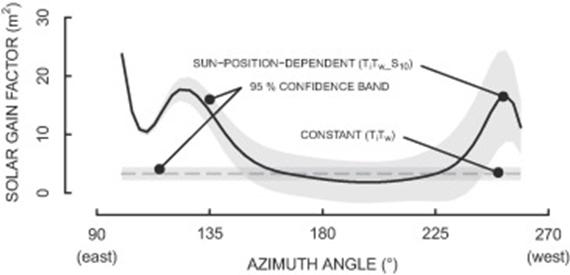
Azimuth-dependent solar gain factor. Source: Rasmussen et al. CC BY 4.0
This last approach is interesting and is somehow similar to shading masks (see figure 2 here)used in simulation models to consider shading duet to local obstacles (i.e. a tree in front of a building, impressive post by German Campos). The biggest drawback of this approach is that it introduces a relevant number of parameters in the model and that it does not consider the height of the sun in the sky (leading to a need for retraining).
So, if engineering literature has a problem solved, and data-drive processes are still not perfect, Why not use the old, simple, but wise engineering equations in a new context?
Together with some colleagues Iñigo Garcia de Eulate and myself tested a new approach. Our idea was quite simple:
- We know/assume that sky diffuse radiation is quite constant and bounded to about 100W/m2. Based on this, we assume that anything exceeding this value can be attributed to direct radiation solar. This a simple formula to apply over the measured data of global radiation over the horizontal plane.
- We perform geometrical transformations to get the direct solar radiation affecting any arbitrary surface.
- We can add back the diffuse radiation an get the global radiation affecting this surface.
The formulae are available in our paper, or can be easily derived from the good-old Solar Engineering of Thermal Processes.
Something to consider is that all this process should be performed considering the solar time, which can differ by up to +-3h from the local time. This is typically the case for most Spanish locations, as well as for Singapore, where Iñigo performed his analysis.
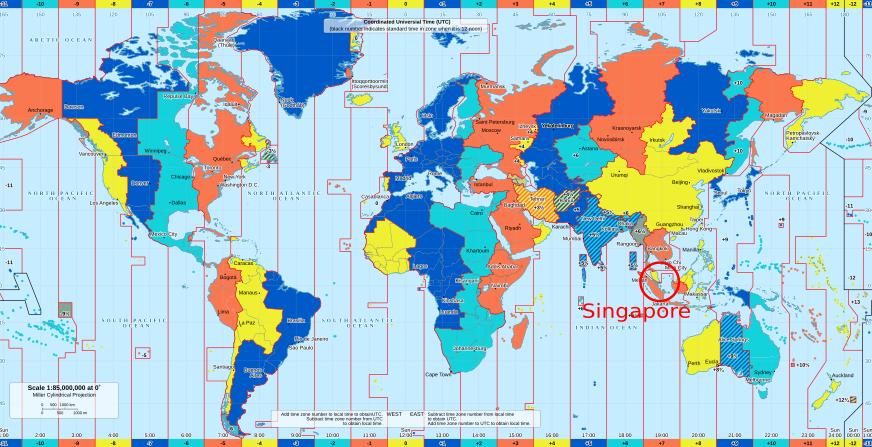
World Time Zone map. Modified from original file by Goran tek-en, CC BY-SA 4.0, via Wikimedia Commons
In our case, we developed all this for an educational building with a south-west-oriented façade.
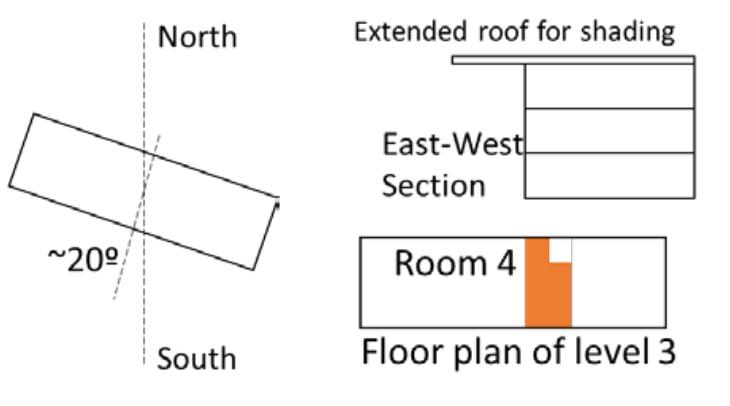
National University of Singapore SDE4 building. Google Street View image and section views
After this process, we ended-up with a solar radiation signal which was better correlated to heat loads (actually cooling loads). Not bad as a starting point, as it improves the chances to get a good building energy model.
| Variable | Correlation with Indoor Temperature |
| Global Solar Radiation over the façade surface | 0,37 (20% improved) |
| Global Direct Solar Radiation over the façade surface | 0,31 |
| Global Solar Radiation over a horizontal surface | 0,30 (baseline) |
| Outdoor Temperature | 0,27 |
| Cooling Load | 0,18 |
| Occupants | 0.18 |
Building an energy model is the next step, we developed an ARX model, but here many of the previously mentioned options would be possible. Any of this would take profit of better solar radiation signals.
This work was mainly the outcome of Inigo’s work, where Beñat, Olaia, Ana and I were keen to collaborate. My sincere thanks to all of them.
The full reference to the paper is the following:
I. G. de Eulate, R. Garay-Marinez, B. A. Goikolea, O. Eguiarte and A. M. Macarulla, “Simplified Geometric Processing of Solar Radiation for Improved Data-Driven Modelling of Short-Term Energy & Comfort Performance in Buildings,” 2024 9th International Conference on Smart and Sustainable Technologies (SpliTech), Bol and Split, Croatia, 2024, https://doi.org/10.23919/SpliTech61897.2024.10612489
Iñigo was happy to publish his code here some time ago:
Iñigo Garcia de Eulate, Roberto Garay-Martinez, Desarrollo de modelos de caracterización a corto plazo de la evolución térmico-energética de edificios, 2023, https://github.com/inigoeulate/PFG_definitivo
